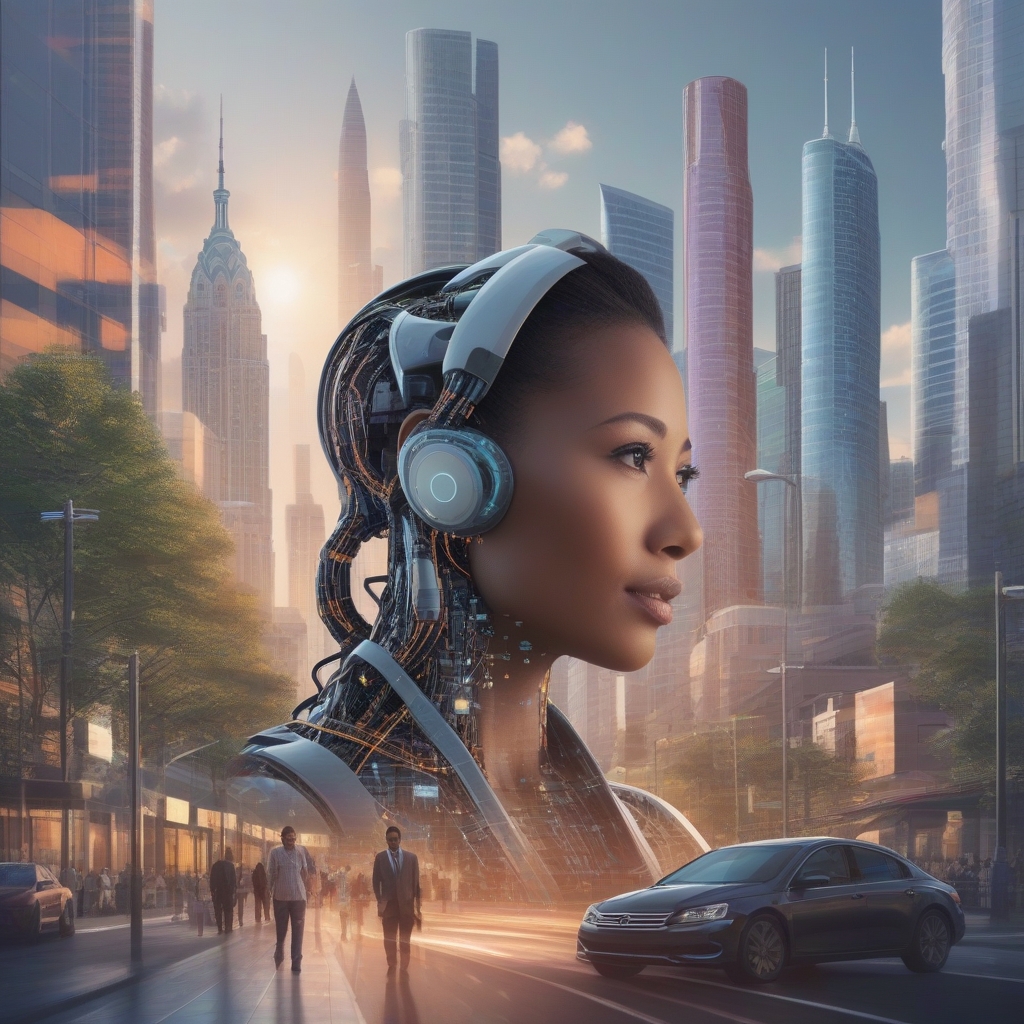The Rise of AI Adoption in America
In recent years, artificial intelligence (AI) has transcended from science fiction into an integral part of our daily lives. From voice-activated assistants in homes to advanced analytics in businesses, AI’s footprint is undeniably expanding. In the United States, this shift is not only changing how individuals interact with technology but also transforming the economic landscape.
Understanding AI Adoption Rates
The widespread integration of AI in America is a testament to its potential to improve efficiency and innovation. Recent studies reveal that Americans are embracing AI at **fairly high rates**, signaling a significant shift in consumer and business practices.
Key areas of AI adoption include:
- **Personal Devices**: Smart speakers and mobile phones with AI capabilities are being adopted by millions of Americans, providing ease and convenience.
- **Business Operations**: Companies across various industries are integrating AI into their workflow to enhance productivity, optimize supply chains, and personalize customer experiences.
- **Healthcare**: AI is revolutionizing healthcare by enabling predictive analytics for disease prevention and streamlining hospital operations.
With these advances, Americans are not only becoming more comfortable with AI technologies but also more reliant on them in their everyday activities.
The Economic Impact of AI
The widespread adoption of AI has profound implications for the U.S. economy. Here are some of the notable economic impacts:
1. Boost in Productivity
- AI systems can automate repetitive tasks, allowing employees to focus on more complex and strategic work.
- This shift can lead to higher productivity levels and increased output, benefiting businesses and driving economic growth.
2. Job Transformation and Creation
- While some fear that AI could displace jobs, it’s important to note that technology often creates new job opportunities. The rise of AI has led to the emergence of new roles such as data scientists, AI specialists, and AI ethicists.
- Reskilling and upskilling workers for AI-related roles can mitigate job displacement, creating a more skilled workforce.
3. Innovation and Competitiveness
- AI encourages innovation through enhanced research and development processes. Companies can harness data-driven insights to create new products and services.
- The United States remains a leader in AI development, ensuring its competitive edge in the global market.
4. Increased Economic Efficiency
- AI can streamline operations across various sectors such as logistics, finance, and agriculture, leading to cost savings and improved service delivery.
- This efficiency is particularly critical in sectors facing labor shortages or high demand, allowing them to maintain service levels.
Challenges and Considerations
While AI brings numerous benefits, its adoption poses certain challenges that must be addressed to maximize its potential.
1. Ethical Concerns
- AI systems utilize large amounts of personal data, raising concerns about privacy and data security.
- Bias in AI algorithms can result in unfair treatment or discrimination, necessitating frameworks for ethical AI deployment.
2. Workforce Transition
- The integration of AI requires a transition in workforce skills, necessitating education and training programs to prepare workers for AI-centric roles.
- Encouraging collaboration between tech companies, educational institutions, and policymakers can facilitate this transition.
3. Regulatory Environment
- A comprehensive regulatory framework is essential to ensure responsible AI use and protect consumer interests.
- Regulations should strike a balance between encouraging innovation and addressing ethical and security concerns.
4. Socioeconomic Inequality
- There’s a risk of AI exacerbating existing inequalities, as access to AI technology and AI-driven opportunities may not be uniform across different social groups.
- Efforts must be made to ensure equitable access to education and technology, enabling all communities to benefit from AI advancements.
Looking Forward: AI and the Future of the American Economy
As AI continues to evolve, its integration into the American economy will only deepen. To capitalize on AI’s potential, stakeholders must prioritize:
1. Collaboration and Innovation
- Public-private partnerships can foster innovation and accelerate AI adoption across different sectors.
- Encouraging interdisciplinary collaboration will enable more comprehensive and effective AI solutions.
2. Education and Skill Development
- Investing in STEM education and continuous learning platforms can prepare the workforce for future AI roles.
- Promoting lifelong learning and reskilling programs is critical to help workers adapt to evolving technological landscapes.
3. Ethical Frameworks and Regulations
- Developing robust ethical guidelines and regulatory frameworks will ensure AI is used responsibly and benefits all citizens.
- Ongoing engagement with stakeholders, including the public, can foster trust in AI technologies.
The thriving AI ecosystem has the potential to propel the American economy into a future of unprecedented growth and innovation. However, realizing this potential requires a collective effort to address challenges and ensure that AI’s benefits are shared broadly across society. As Americans continue to embrace AI, the focus must remain on fostering an environment of responsible, inclusive, and forward-thinking AI adoption.

Leave a Reply